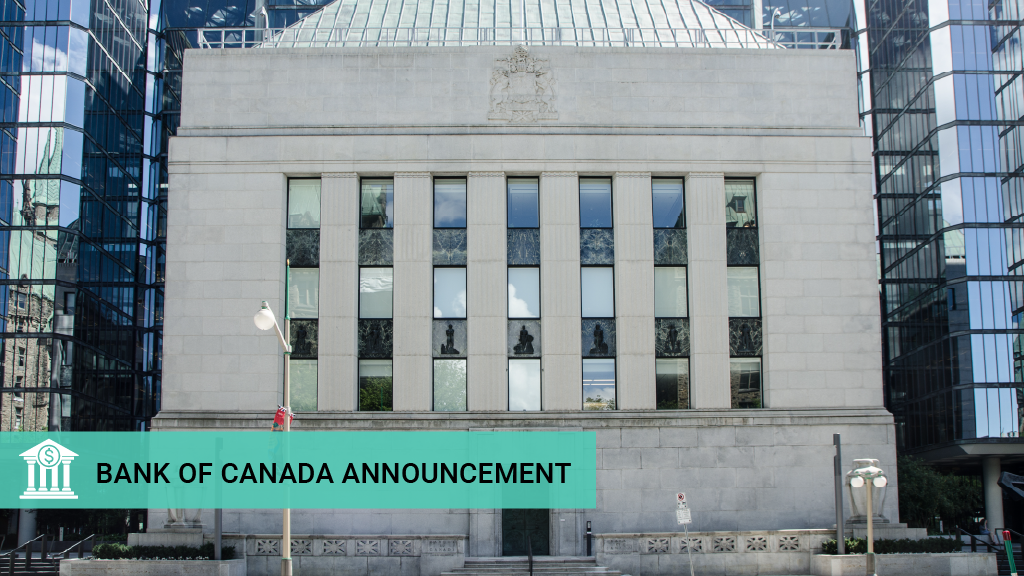
Today, the Bank of Canada announced that it has cut the overnight lending rate yet again by 25 basis points to 2.25%. This is the second consecutive rate cut the Bank has made this fall, and the third cut this year.
Though the global economy has held up surprisingly well against the surge in tariffs from the United States, the effects are starting to show, according to the Bank. Trade patterns are shifting, and uncertainty around ongoing tensions is discouraging investment in many countries. In Canada, those pressures were felt in the second quarter, when the economy shrank by 1.6%, due to falling exports and weaker business investment.
“Canadian businesses and households are feeling the consequences of increased US protectionism. It is difficult, and ongoing uncertainty is compounding the difficulty. For many months, we have been stressing that monetary policy cannot undo the damage caused by tariffs. Increased trade friction with the United States means our economy will work less efficiently, with higher costs and less income. Monetary policy can help the economy adjust as long as inflation is well-controlled, but it cannot restore the economy to its pre-tariff path,” said Tiff Macklem, Governor of the Bank of Canada, in a press conference with reporters following the announcement.
“The Bank of Canada is focused on ensuring Canadians continue to have confidence in price stability through this period of global upheaval.”
In September, Canada’s Consumer Price Index (CPI) rose 2.4% year over year, an increase from the 1.9% gain reported in August. While inflation edged higher, the Bank of Canada proceeded with a rate cut, signaling its focus on supporting growth amid signs of economic softness. The unemployment rate held steady in September, following an uptick the previous month, suggesting lingering weakness in the labour market.
“US trade policy remains unpredictable, as events over the weekend reminded us. There continues to be considerable uncertainty, both about US tariffs and their impacts. The range of possible outcomes is wider than usual – we need to be humble about our forecast. If the outlook changes, we are prepared to respond,” said Macklem.
Second fall rate cut a tailwind for homebuyers
Following a slower-than-usual spring, housing activity in Canada’s largest markets edged higher through the summer months. With borrowing costs decreasing yet again, the stage is set for sidelined buyers to return to the market.
According to the latest Royal LePage® Home Price Update and Market Forecast, the aggregate1 price of a home in Canada eased upwards modestly in the second quarter of 2025, increasing 0.3% year over year to $826,400. On a quarter-over-quarter basis, the national aggregate home price decreased by 0.4%.
“Unemployment has stayed manageable, yet job insecurity, particularly among younger Canadians, will persist until Canada reaches a new trade agreement with the United States,” said Phil Soper, president and CEO of Royal LePage, in the report. “While mortgage rates remain above their pandemic lows, the Bank’s recent rate cut is easing pressure on borrowers. Rates are once again in the threes – a level that feels supportive by the standards of the past two decades.”
The Bank of Canada will make its next and final interest rate announcement for 2025 on December 10th.
Read the full October 29th report here. Want to know more about how the overnight lending rate works? Read our explainer on how the Bank of Canada uses this financial tool.
1Aggregate prices are calculated using a weighted average of the median values of all housing types collected. Data is provided by RPS Real Property Solutions and includes both resale and new build.






